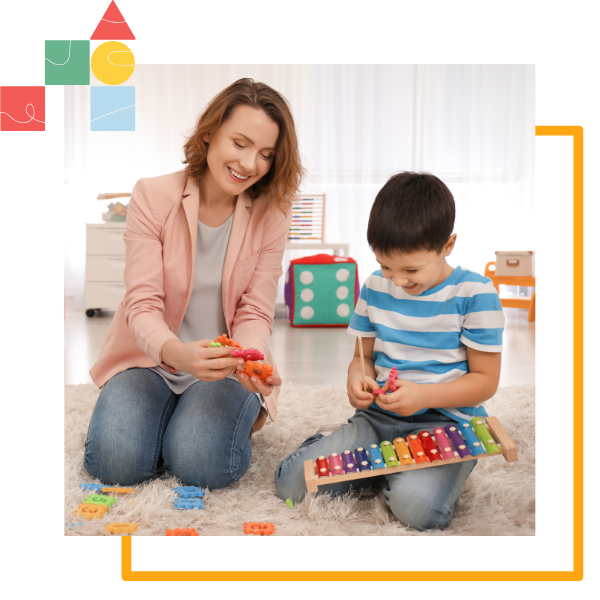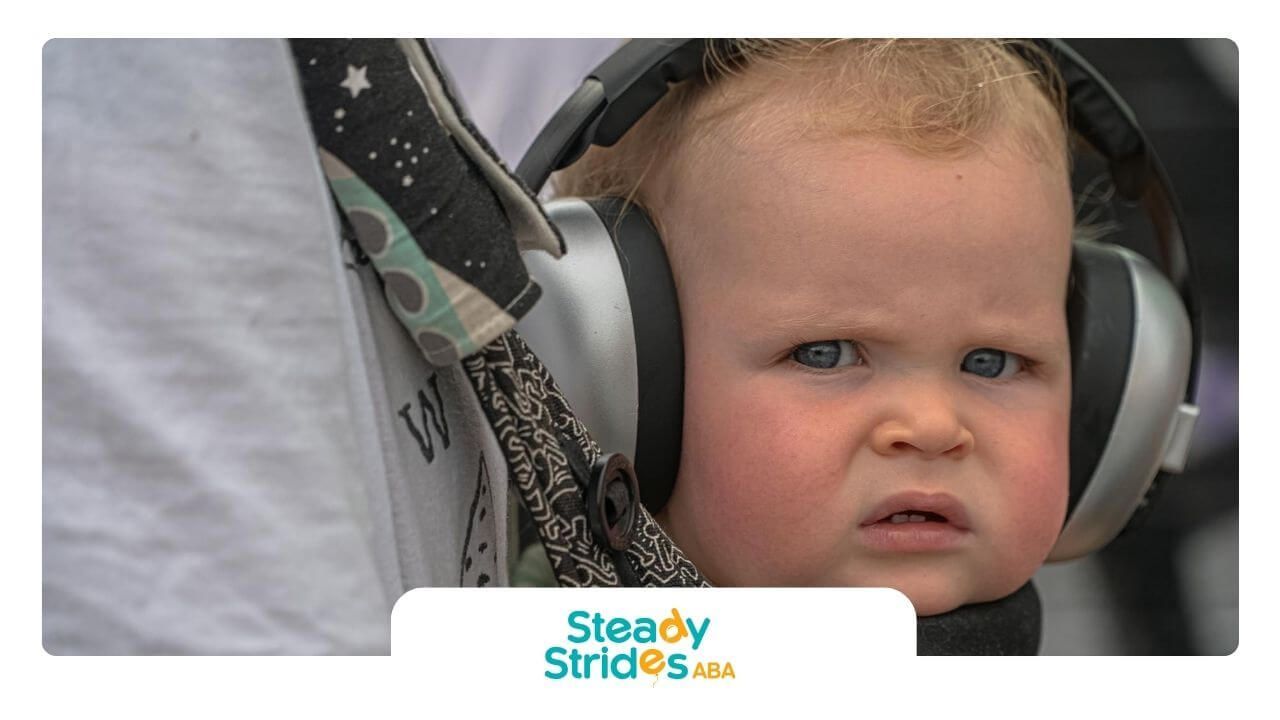Autistic intuition, often described as a "sixth sense," is a captivating phenomenon observed in individuals on the autism spectrum. This heightened sensory and intuitive ability enables them to perceive and process information, including the emotions of others, in ways that differ from neurotypical individuals.
This blog post aims to explore the concept of autistic intuition, examining its manifestations, neurological underpinnings, and societal implications. We will journey into the world of autistic individuals, gaining a deeper understanding of their unique perspective and promoting empathy and acceptance for those who experience the world through this extraordinary lens.
Unraveling the Myth: Autistic Intuition as a 6th Sense
The notion of a "sixth sense" often evokes images of paranormal abilities and mystical powers. However, when we discuss the "sixth sense" in the context of autism spectrum disorder, it's essential to differentiate between popular myths and the actual experiences of autistic individuals.
Autistic intuition is not about predicting the future or reading minds. Instead, it's a heightened sensitivity, often manifested as strong "gut feelings," that arises from a deeper processing of sensory information, social cues, and future events emotional undercurrents. This heightened awareness allows autistic individuals to perceive subtle details and patterns that might escape the notice of neurotypical individuals.
Exploring the Concept of a "6th Sense" in Autistic Individuals
Autistic people often describe their intuition as an innate ability to sense and interpret information that goes beyond the traditional five senses. This "sixth sense" manifests in various ways, and its intensity and expression vary significantly among individuals on the autism spectrum.
For some, it might involve a heightened sensitivity to the feelings of others, allowing them to perceive subtle shifts in emotions and moods. This empathetic acuity can be both a gift and a challenge, as it might lead to emotional overload in certain social situations.
Others might experience this "sixth sense" as an exceptional ability to recognize patterns and make connections that others tend to miss. They might excel in fields that require meticulous attention to detail, strategic thinking, or an intuitive grasp of complex systems.
The Interplay Between Autism and Enhanced Sensory Perceptions
One of the hallmarks of autism is a difference in sensory perception. Autistic individuals often experience heightened sensitivity to sensory input, such as sounds, sights, smells, tastes, and textures. This heightened sensitivity can manifest as both hypersensitivity (over-responsiveness) and hyposensitivity (under-responsiveness) to stimuli.
This unique way of experiencing the world through intensified senses plays a crucial role in shaping autistic intuition. It's not merely about having a "sixth sense" but rather about experiencing the existing five senses with heightened intensity.
For instance, an autistic individual might notice subtle changes in lighting, temperature, or air pressure that others might not perceive. These seemingly insignificant details contribute to a richer sensory landscape, informing their intuitive understanding of their environment.
Dissecting the Layers: How Autistic Intuition Manifests
Autistic intuition reveals itself in various aspects of life, influencing how individuals on the spectrum process information, interact socially, and navigate the world. Understanding these manifestations is crucial for appreciating the unique perspective of those with autistic intuition.
One of the key ways autistic intuition presents itself is through a heightened awareness of social cues and body language. While autistic individuals might process these cues differently from neurotypical individuals, they often demonstrate a keen ability to detect subtle shifts in tone, facial expressions, and body posture, providing them with valuable insights into social dynamics and social skills.
Identifying Patterns: Autistic Individuals and their Unique Sensory Experiences
From early childhood, autistic children may demonstrate a unique ability to recognize patterns in their sensory experiences. This pattern recognition extends beyond visual patterns to encompass auditory, tactile, and even social interactions. They might notice recurring sequences in sounds, textures, or social behaviors, leading to an enhanced ability to anticipate events and develop coping mechanisms for navigating their environment.
For some autistic individuals, this pattern recognition translates into a keen awareness of routines and predictability. Disruptions to routines can be highly distressing, as they disrupt the anticipated patterns that provide a sense of stability and control.
However, this same sensitivity to patterns can also foster remarkable talents. Many autistic individuals excel in fields that require meticulous attention to detail, such as mathematics, music, and computer programming, where patterns and logical structures form the foundation of their craft.
Beyond the Five Senses: Understanding Autistic Sensory Processing
While we often talk about the five senses—sight, hearing, taste, smell, and touch—sensory processing encompasses a much broader spectrum of experiences. For individuals on the autistic spectrum, sensory processing differs from neurotypical individuals in significant ways, influencing their perception, reactions, and overall interaction with the world.
Autistic sensory processing is characterized by both heightened and diminished sensitivities to sensory stimuli. This means they might be hypersensitive to certain sounds, textures, or smells while simultaneously being hyposensitive to others. This unique sensory profile shapes their intuitive understanding of the world, influencing how they interpret social cues, navigate environments, and manage emotional responses.
Understanding these differences is crucial for creating supportive and inclusive environments for autistic individuals. By recognizing and respecting their sensory needs, we empower them to thrive and engage with the world on their own terms.
The Cognitive Perspective: Autistic Intuition in Decision-Making
Autistic intuition extends beyond heightened sensory perception; it also plays a significant role in cognitive processes, particularly in decision-making. While neurotypical individuals often rely on a combination of logic, emotion, and social cues to make decisions, autistic individuals might navigate choices differently, drawing upon their unique cognitive strengths.
One of the hallmarks of autistic intuition in decision-making is a strong reliance on pattern recognition and logical analysis. Autistic individuals might excel at identifying underlying patterns in information, allowing them to make connections and deductions that others might miss.
Intuitive Decisions: How Autistic Minds Navigate Choices
In daily life, autistic individuals often face a barrage of sensory information and social complexities. To navigate these challenges, they often rely on their intuitive decision-making abilities, which are rooted in their unique cognitive processing styles.
Autistic minds excel at recognizing patterns, analyzing details, and making connections that might escape the notice of neurotypical individuals. This cognitive strength allows them to quickly assess situations, identify potential risks and benefits, and arrive at decisions that align with their understanding of the world.
While autistic intuition might not always lead to conventionally "correct" answers, it provides autistic individuals with a valuable framework for making choices that feel right to them. This reliance on internal guidance and a strong sense of self can be both empowering and liberating, allowing them to navigate a world that often feels overwhelming or confusing.
The Role of Cognitive Processes in Autistic Intuition
Cognitive processes, such as attention, memory, and problem-solving, play a pivotal role in shaping autistic intuition. Autistic individuals often exhibit distinct cognitive styles, characterized by strengths in areas such as detail-oriented thinking, pattern recognition, and systemizing.
These cognitive differences contribute to their unique way of perceiving and interpreting the world. For instance, their heightened attention to detail allows them to pick up on subtle cues and patterns, informing their intuition. Their exceptional memory might enable them to recall past experiences with vivid clarity, drawing upon a vast database of sensory and social information.
While autistic intuition might not always lead to the conventionally "correct answer," it reflects a deeply processed understanding of the world from their unique perspective. It's essential to recognize and respect these cognitive differences, fostering an environment where autistic individuals feel empowered to trust their intuition and make decisions that feel authentic to them.
Scientific Insights: The Neurological Underpinnings of Autistic Intuition
Ongoing research explores the neurological underpinnings of autistic intuition, seeking to understand the biological basis of this unique way of experiencing the world. While research in this area is still developing, studies suggest that differences in brain functionality, particularly in regions associated with sensory processing and social cognition, contribute to the heightened sensitivities and intuitive abilities observed in autistic individuals.
Investigating the neurological basis of autistic intuition sheds light on the diverse ways the human brain perceives and interacts with the world. It moves us away from mystical interpretations of "sixth sense" abilities, grounding our understanding in the complex interplay of genes, brain structure, and environmental influences.
Brain Functionality and its Relation to Autistic Sensory Perception
Differences in brain functionality play a significant role in shaping autistic sensory perception, which, in turn, influences autistic intuition. Studies using neuroimaging techniques, such as fMRI, have revealed variations in brain activity patterns in autistic individuals, particularly in regions responsible for processing sensory information.
For example, research suggests that autistic individuals might exhibit heightened activity in sensory cortices, the areas of the brain responsible for processing visual, auditory, tactile, and other sensory input. This increased activity aligns with their heightened sensitivity to sensory stimuli, leading to a richer and more intense sensory experience of the world.
Moreover, differences in brain regions associated with integrating sensory information, such as the thalamus, might contribute to the unique way autistic individuals perceive and interpret their surroundings. These neurological variations highlight the biological basis of autistic sensory perception, moving our understanding beyond behavioral observations to a deeper appreciation of the brain's role in shaping autistic experiences.
Recent Studies Shedding Light on the Neural Basis of Autism and Intuition
Recent studies employing advanced neuroimaging technologies are beginning to unravel the complex neural basis of autism and its connection to intuition. These studies focus on identifying structural and functional differences in brain regions associated with sensory processing, social cognition, and emotional regulation.
One area of interest is the connectivity between different brain regions. Some studies suggest that autistic individuals may have atypical connectivity patterns, leading to differences in how information is integrated and processed. This altered connectivity might contribute to their heightened awareness of sensory details and their unique way of perceiving patterns and making intuitive leaps.Comparative Analysis: Autistic Intuition vs. Neurotypical Intuition
While intuition is a universal human experience, the way it manifests in autistic individuals often differs from neurotypical intuition. This distinction arises from their unique cognitive and sensory processing styles, influencing how they perceive social cues, interpret information, and navigate social interactions.
Neurotypical individuals often rely heavily on unconscious processing of social cues, allowing them to "read between the lines" and infer meaning from subtle social signals. In contrast, autistic individuals might engage in a more conscious and analytical approach, meticulously piecing together social information to make sense of social dynamics.
Delineating Differences: How Autistic Intuition Stands Apart
One of the key differences lies in the way autistic and neurotypical individuals process social information. Neurotypical individuals often rely on a combination of verbal and nonverbal cues, seamlessly integrating facial expressions, tone of voice, and body language to understand social interactions.
Autistic individuals, while highly observant, may process these cues differently. Instead of unconsciously absorbing and interpreting social nuances, they might engage in a more deliberate and analytical approach. They might focus intently on specific details, like a change in facial expression or a particular phrase, to decode the underlying meaning.
This difference in social information processing can lead to misunderstandings and misinterpretations in social situations. For autistic individuals, it's essential to have their unique communication styles and social processing differences recognized and respected to foster genuine connection and understanding.
Commonalities and Contrasts: Autistic and Neurotypical Sensory Experiences
While differences in sensory experiences between autistic and neurotypical individuals are frequently highlighted, exploring the commonalities is equally important for fostering understanding and empathy. Both autistic and neurotypical individuals share the fundamental human experience of perceiving the world through their senses, experiencing a range of emotions, and forming social connections, though the ways in which these experiences manifest might differ.
One commonality lies in the subjective nature of sensory experiences. What might be perceived as a pleasant sound or smell to one person could be overwhelming or even painful to another, regardless of their neurodiversity. Recognizing this subjectivity is crucial for creating sensory-inclusive environments that cater to a diverse range of needs.
By focusing on shared human experiences, we move away from a deficit-based model of autism towards a strengths-based perspective that celebrates neurodiversity and promotes acceptance for all individuals.
Practical Implications: Navigating Life with Autistic Intuition
Navigating daily life with autistic intuition presents both unique advantages and challenges. On the one hand, this heightened sensitivity can enrich experiences, fuel creativity, and foster deep connections with the world. On the other hand, it can also lead to sensory overload, social anxiety, and difficulties in processing the complexities of human interaction.
Understanding these practical implications is essential for empowering autistic individuals to thrive in a world not always designed with their neuro differences in mind. By recognizing their sensory needs, respecting their communication styles, and valuing their unique cognitive strengths, we can create a more inclusive and supportive environment for autistic individuals to flourish.
Everyday Life and Autistic Sensory Advantages
While autistic individuals often face challenges related to sensory sensitivities, it's equally important to recognize the numerous advantages that their unique sensory experiences can bring to everyday life. Their heightened awareness of sensory details allows them to perceive the world with a richness and depth that neurotypical individuals might miss.
For instance, an autistic individual might possess a keen eye for visual patterns, noticing subtle variations in color, texture, or light that others overlook. This visual acuity could translate into talents for art, design, or photography. Their heightened sense of hearing might make them acutely aware of auditory nuances, leading to a deep appreciation for music or a knack for identifying sounds.
These sensory advantages can enrich their lives and the lives of those around them, bringing fresh perspectives and unique insights to a wide range of fields and endeavors. By recognizing and celebrating these strengths, we empower autistic individuals to embrace their neurodiversity and contribute their unique talents to the world.
Challenges and Strategies for Managing Heightened Sensory Inputs
Autistic individuals often experience the world with heightened sensory input, which, while enriching in many ways, can also pose significant challenges in daily life. The constant bombardment of sensory stimuli—from bright lights and loud noises to strong smells and scratchy textures—can lead to sensory overload, anxiety, and difficulty concentrating.
Developing effective coping mechanisms for managing these heightened sensory inputs is vital for improving quality of life and reducing stress. Strategies might include creating calming sensory spaces at home or work, utilizing noise-canceling headphones or sunglasses to minimize sensory overload, and gradually introducing sensory stimuli in controlled environments to build tolerance.
It's also essential to respect the individual sensory preferences of autistic individuals, recognizing that what might be calming for one person could be overwhelming for another. Open communication and a willingness to accommodate sensory needs are crucial for creating supportive and inclusive environments where autistic individuals feel comfortable and respected.
Societal Perceptions and Misconceptions of Autistic Intuition
Societal perceptions of autistic intuition often oscillate between romanticized notions of "sixth sense" abilities and a lack of understanding of the challenges associated with sensory and social processing differences. These misconceptions can lead to misinterpretations of autistic behaviors, perpetuating stereotypes that hinder genuine inclusion and acceptance.
Dispelling these myths requires open dialogue, accurate information, and a willingness to learn from the lived experiences of autistic individuals. By shifting societal perceptions towards a more accurate and empathetic understanding of autistic intuition, we can foster a more inclusive world where neurodiversity is celebrated, and autistic individuals are empowered to thrive.
Debunking Myths: The Reality of Living with an Autistic Sensory Perspective
One of the pervasive myths surrounding autism is the notion that autistic individuals lack empathy or emotional depth. This harmful stereotype fails to recognize that autistic individuals often experience emotions intensely but might express them differently from neurotypical individuals and their family members. Their heightened sensory processing can contribute to a deep empathy for animals, nature, or social justice issues, even if they struggle to navigate the complexities of human social interaction.
Another misconception is the idea that autistic intuition is a supernatural ability, akin to mind-reading or clairvoyance. In reality, autistic intuition stems from a combination of heightened sensory awareness, unique cognitive processing styles, and a deep connection to patterns and details. It's about perceiving the world through a different lens, not possessing magical powers.
Debunking these myths is crucial for fostering genuine understanding and acceptance of autistic individuals. By recognizing the reality of living with an autistic sensory perspective, we open ourselves to a world of diverse experiences and perspectives that enrich our understanding of the human condition.
Fostering Understanding and Acceptance of Autistic Intuition in Society
Creating a society that embraces and celebrates autistic intuition requires ongoing effort and a commitment to fostering understanding and challenging misconceptions. Educating ourselves and others about autism, sensory processing differences, and the diverse ways autistic individuals experience the world is an essential first step.
Open and respectful communication with autistic individuals is crucial for gaining insights into their lived experiences and perspectives. Listening to their stories, valuing their insights, and incorporating their voices into discussions about autism can help bridge the gap between neurotypical perceptions and autistic realities.
By advocating for sensory-inclusive environments, promoting neurodiversity in education and employment, and challenging stigma and discrimination, we pave the way for a more just and equitable society where autistic individuals feel valued, respected, and empowered to share their unique gifts.
Enhancing Autistic Intuition: Can it Be Done?
The question of whether autistic intuition can be enhanced sparks debate within the autistic community and among researchers. Some argue that focusing on "enhancing" autistic intuition might inadvertently pathologize neurodiversity, implying that autistic individuals need to be "fixed" rather than accepted for who they are.
Others, however, believe that providing support and strategies for autistic individuals to better understand and manage their sensory experiences and develop their intuitive skills can be empowering and improve their quality of life. This might involve sensory integration therapies, mindfulness practices, or developing coping mechanisms for sensory overload.
Methods and Approaches to Support and Develop Autistic Sensory Skills
While there's no one-size-fits-all approach to supporting and developing autistic sensory skills, various methods and approaches can be tailored to individual needs and preferences. The primary goal is not to "fix" or diminish autistic sensory experiences but rather to provide autistic individuals with tools and strategies to navigate a world that often feels overstimulating or overwhelming.
Sensory integration therapy, often used with autistic children, aims to help individuals process sensory information more effectively. This might involve activities that provide controlled sensory input, such as swinging, deep pressure touch, or playing with textured materials.
Mindfulness practices, such as meditation or yoga, can help autistic individuals develop self-awareness, emotional regulation techniques, and coping mechanisms for managing sensory overload. By tuning into their bodies and practicing mindfulness, they can learn to identify their sensory triggers, recognize early signs of sensory overload, and implement calming strategies.
The Debate on Enhancing Intuitive Abilities in Autistic Individuals
The notion of "enhancing" intuitive abilities in autistic individuals sparks an ongoing debate, raising ethical considerations and highlighting the importance of respecting neurodiversity. Those who argue against intentional enhancement often emphasize the potential for exploitation or the risk of diminishing the unique qualities that make autistic individuals who they are.
They advocate for a shift in perspective from "fixing" autistic individuals to creating a more inclusive and accepting society that values their neuro differences. Focus should be placed on providing support, accommodations, and access to resources that empower autistic individuals to thrive on their own terms, celebrating their strengths and recognizing their unique contributions.
The debate regarding enhancing autistic intuition underscores the complex interplay of ethical considerations, individual experiences, and societal perceptions surrounding neurodiversity. It highlights the importance of engaging in open and respectful dialogue, listening to the voices of autistic individuals, and ensuring that any approaches prioritize their well-being, autonomy, and right to self-determination.
Conclusion
In essence, the concept of autistic intuition challenges traditional understandings of sensory perceptions. Autistic individuals exhibit unique sensory experiences that go beyond the conventional five senses. Their intuitive decision-making processes showcase a distinct cognitive perspective influenced by enhanced sensory perceptions. Understanding and accepting these differences is crucial in fostering inclusive environments that embrace diverse ways of experiencing the world.
By debunking myths and promoting societal acceptance, we can support individuals with autism in navigating life with their intuitive strengths. While there is ongoing debate on enhancing autistic intuition, nurturing and valuing these inherent sensory skills can lead to positive outcomes in personal, creative, and professional realms.
Reach out to Steady Strides ABA for a personalized ABA therapy!
Frequently Asked Questions
What distinguishes autistic intuition from typical sensory experiences?
Autistic intuition sets itself apart from typical sensory experiences by its intensity and the depth of processing involved. Autistic individuals often experience the world with heightened sensitivity, noticing subtle patterns and nuances that neurotypical individuals might miss, leading to their unique intuitive insights.
How does autistic intuition affect relationships and social interactions?
Autistic intuition can profoundly impact relationships and social interactions. While autistic individuals might demonstrate deep empathy and care for others, their unique processing of social cues and emotional nuances can lead to misunderstandings if their communication styles are not understood.
Can individuals with autism enhance their intuitive abilities over time?
While the concept of "enhancing" intuition is debated, individuals with autism can learn to better understand and manage their sensory experiences, developing coping mechanisms for sensory overload and strengthening their intuitive decision-making processes over time.













